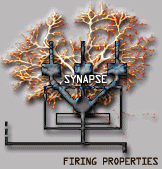
EXTERNAL-->INFORMATION INTERNAL---->DANGER

EXTERNAL-->INFORMATION INTERNAL---->DANGER
Suppose that the neural network fires in a special way when danger is perceived. Extreme danger perception has something special. Horses stampeding in panic from a fire, show in an objective way the consequences of an initial danger perception which, once elaborated, derive in special behavior. Lower animals perceiving the danger of a future earthquake also show objectively the consequences of their initial detection, with special non-human sensors. There is a strong survival value associated with such an attention state related to danger detection.
Johnson-Laird, P
At least for human beings, attention should not be confused with consciousness. Within one's field of consciousness there are certain elements or events that are at the focus of one's attention. Certain others are unattended and at the periphery of consciousness. It is important to emphasize this distinction because`to be conscious of' is sometimes used to mean `to pay attention to'. So there are many things not on the center but on the periphery of our consciousness. For example, the information about a slight headache or the feeling of wearing woolen stockings. A danger perception may begin as one information among others, at the periphery of consciousness, but in general it is, most of the times, at the center of it.
Cogitation, or "the ability to react to future situations before they arise, utilize the knowledge of past events in dealing with the present and future, and in every way to react in a much fuller, safer and more competent manner to the emergencies which face it" (215) is the next consideration. Johnson-Laird postulates that symbolism is a much more essential element of cogitation than is parallelism. When we move on to such abstractions as daydreaming, especially goal-less musings, mental arithmetic seems almost absurd. Johnson-Laird then turns to the subject of communication. Borrowing heavily from Chomsky, the author notes that the rules of grammar are easily represented computationally, but when one adds intention to language (for example, advising, promising, or blaming), the difficulties of computational representation are much more intense. Formal language is meaningless, really, until it has been assigned an interpretation. Predicting the products of imagination seems beyond the realm of science, be it psychology or mathematics.
NEXT
OTHER
2.feb.1999
Pulsar tecla de vuelta
Glosario de Carlos von der Becke.